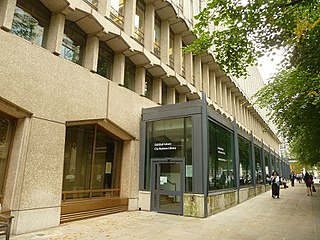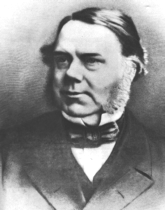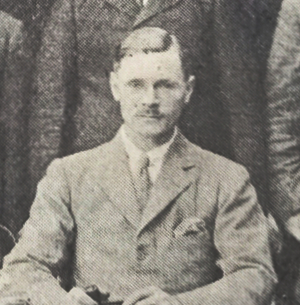
The Worshipful Company of Clockmakers was established under a Royal Charter granted by King Charles I in 1631. It ranks sixty-first among the livery companies of the City of London, and comes under the jurisdiction of the Privy Council. The company established a library and its museum in 1813, which is the oldest specific collection of clocks and watches worldwide. This is administered by the company's affiliated charity, the Clockmakers' Charity, and is presently housed on the second floor of London's Science Museum. The modern aims of the company and its museum are charitable and educational, in particular to promote and preserve clockmaking and watchmaking, which as of 2019 were added to the HCA Red List of Endangered Crafts.

A clockmaker is an artisan who makes and/or repairs clocks. Since almost all clocks are now factory-made, most modern clockmakers only repair clocks. Modern clockmakers may be employed by jewellers, antique shops, and places devoted strictly to repairing clocks and watches. Clockmakers must be able to read blueprints and instructions for numerous types of clocks and time pieces that vary from antique clocks to modern time pieces in order to fix and make clocks or watches. The trade requires fine motor coordination as clockmakers must frequently work on devices with small gears and fine machinery.

The Clockmakers' Museum in London, England, is believed to be the oldest collection specifically of clocks and watches in the world. The collection belongs to and is administered by the Clockmakers’ Charity, affiliated to the Worshipful Company of Clockmakers, founded in 1631 by Royal Charter. Since 2015 it has been housed in a gallery provided by the Science Museum in South Kensington, having formerly been located in the Guildhall complex in the City of London since 1874, where it first opened to the public. Admission is free.

Chronometry or horology is the science studying the measurement of time and timekeeping. Chronometry enables the establishment of standard measurements of time, which have applications in a broad range of social and scientific areas. Horology usually refers specifically to the study of mechanical timekeeping devices, while chronometry is broader in scope, also including biological behaviours with respect to time (biochronometry), as well as the dating of geological material (geochronometry).

The Guildhall Library is a public reference library in London, England, specialising in subjects relevant to London and its history. It is administered by the Corporation of London, the government of the City of London, which is the historical heart of London. The collection has its greatest depth on topics specifically concerned with the City, but also contains much material on other parts of metropolitan London.

Charles Frodsham was a distinguished English horologist, establishing the firm of Charles Frodsham & Co, which remains in existence as the longest continuously trading firm of chronometer manufacturers in the world. In January 2018, the firm launched a new chronometer wristwatch, after sixteen years in development. It is the first watch to use the George Daniels double-impulse escapement.

The American Watchmakers-Clockmakers Institute (AWCI) is a not-for-profit trade association based in the United States that is dedicated to the advancement of the modern watch industry, from which it receives a significant portion of its funding. While the AWCI is an American organization, it also has members throughout the world.
Chronometrophilia is described in its byline as the "Swiss Association for the History of Timekeeping / Association suisse pour l'histoire de la mesure du temps / Schweizerische Gesellschaft für die Geschichte der Zeitmessung". It is a group of collectors and enthusiasts interested in the history of horology.
Deutsche Gesellschaft für Chronometrie (DGC), today is an organization of scholars, collectors and enthusiasts in Germany interested in the science, art and history of horology.
Jonathan Betts MBE is Curator Emeritus at the Royal Observatory in Greenwich, England, a horological scholar and author, and an expert on the first marine timekeeper which was created by John Harrison in the middle of the 18th century. Betts was formerly Senior Specialist in horology at Greenwich. Between 2016 and 2019 he served on the board of trustees of the Institute of Conservation.

Sibford Gower is a village and civil parish about 6.5 miles (10.5 km) west of Banbury in Oxfordshire, on the north side of the Sib valley, opposite Sibford Ferris. Sibford Gower parish includes the village of Burdrop. The 2011 Census recorded the parish's population as 508. Much of the village is a conservation area.

Joseph Knibb (1640–1711) was an English clockmaker of the Restoration era. According to author Herbert Cescinsky, a leading authority on English clocks, Knibb, "next to Tompion, must be regarded as the greatest horologist of his time."

Cyril Frederick Cherrington Beeson CIE, D.Sc. (1889–1975) was an English entomologist and forest conservator who worked in India. Beeson was an expert on forest entomology who wrote numerous papers on insects, and whose book on Indian forest insects remains a standard work on the subject. After his retirement and return to England he became an antiquarian horologist.
John Knibb (1650–1722) was an English clockmaker born in Claydon, Oxfordshire. He produced various clocks and watches including bracket clocks, lantern clocks, longcase clocks, and some wall-clocks, as well as building and maintaining several turret clocks. Even though his main market was catering to customers of modest means, he also dominated the higher-quality sector. Only six of Knibb's watches are known to survive.

Ahasuerus Fromanteel was a clockmaker, the first maker of pendulum clocks in Britain.

Eric John Dingwall (1890–1986) was a British anthropologist, psychical researcher and librarian.
Charles Gretton was an English clock and watchmaker during the golden age of English clockmaking.

William Hamilton Shortt (1881–1971) was a railway engineer and noted horologist, responsible for the design of the Shortt-Synchronome free pendulum clock, a widely used time standard, employed internationally in observatories in the period between the two World Wars. His deep involvement in precision timekeeping, as a colleague of Frank Hope-Jones and director of the Synchronome Company, derived from work on the safety of train travel and the accurate measurement of train speeds, following investigations into a serious train derailment of a LSWR train at Salisbury Station in 1906, when twenty-eight people died.

The Dingwall Beloe Lecture Series is the result of bequests by Eric Dingwall, formerly an Assistant Keeper of Printed Books in the British Museum, and to the Clockmakers Company by Reginald Beloe TD, the noted horological collector and Master of the Company in 1977.
The Horological Society of New York (HSNY) is an American nonprofit organization dedicated to advancing the art and science of horology.












